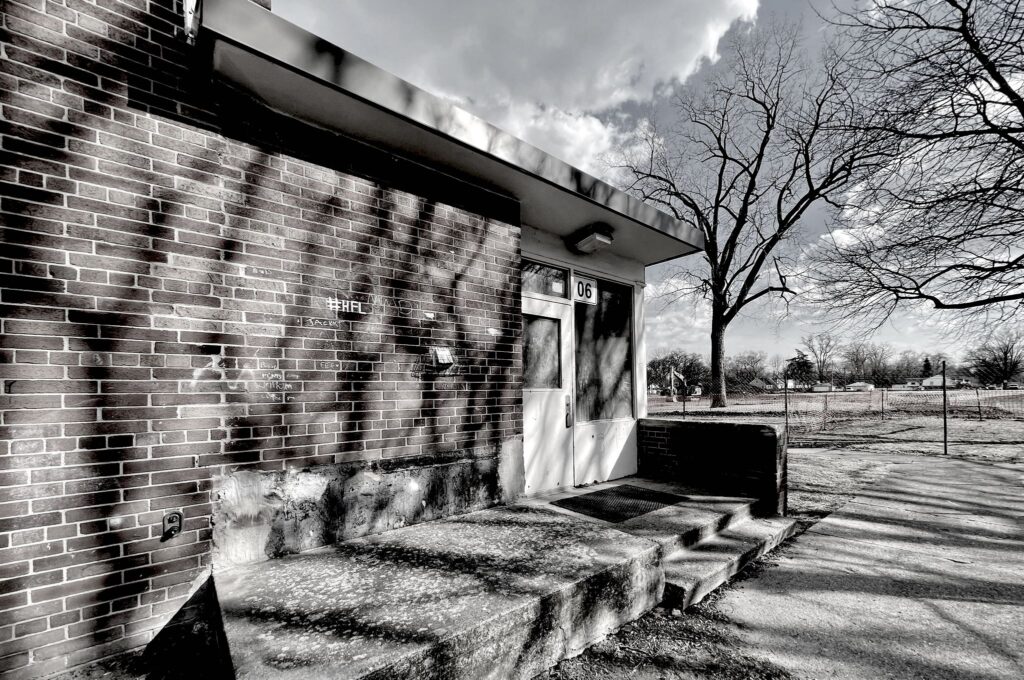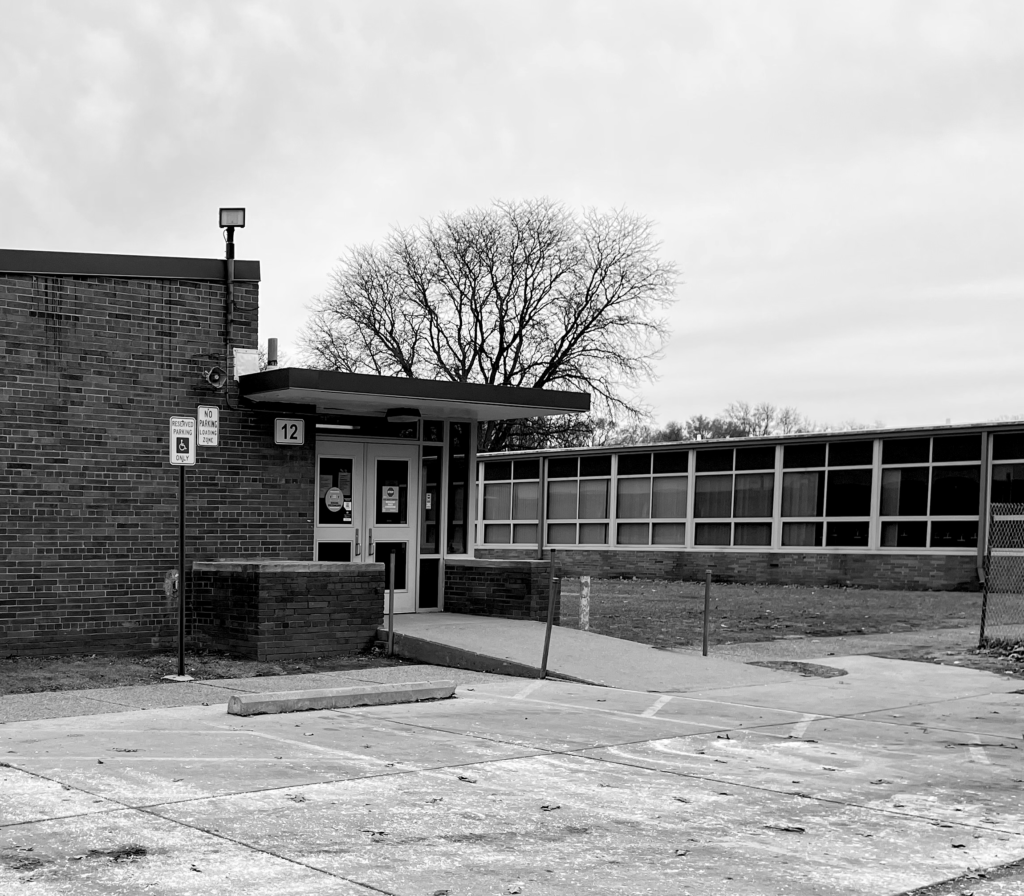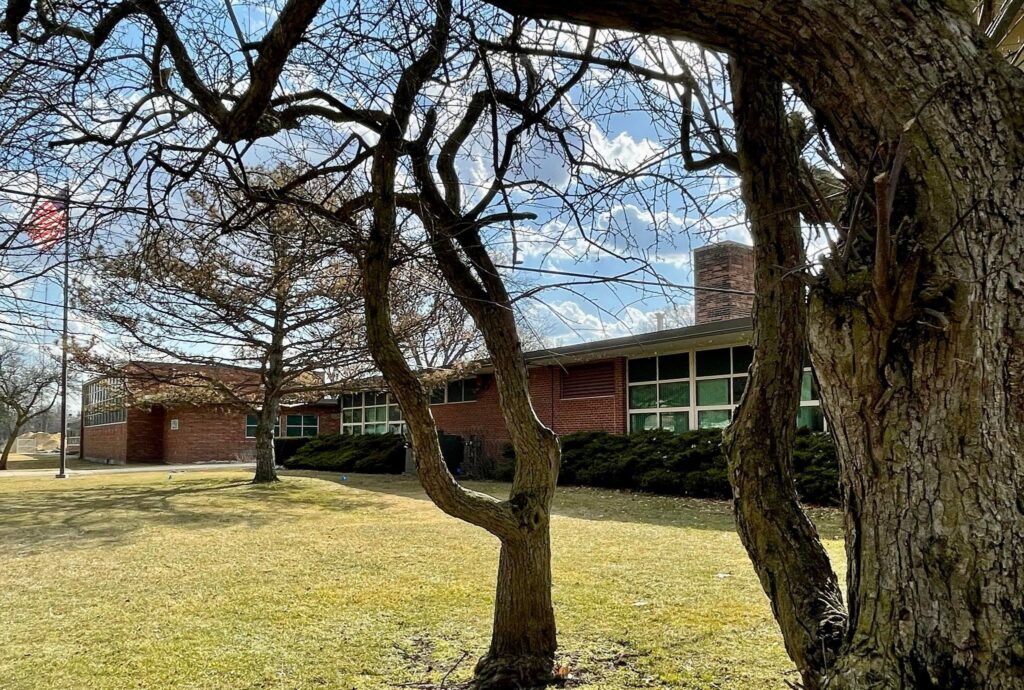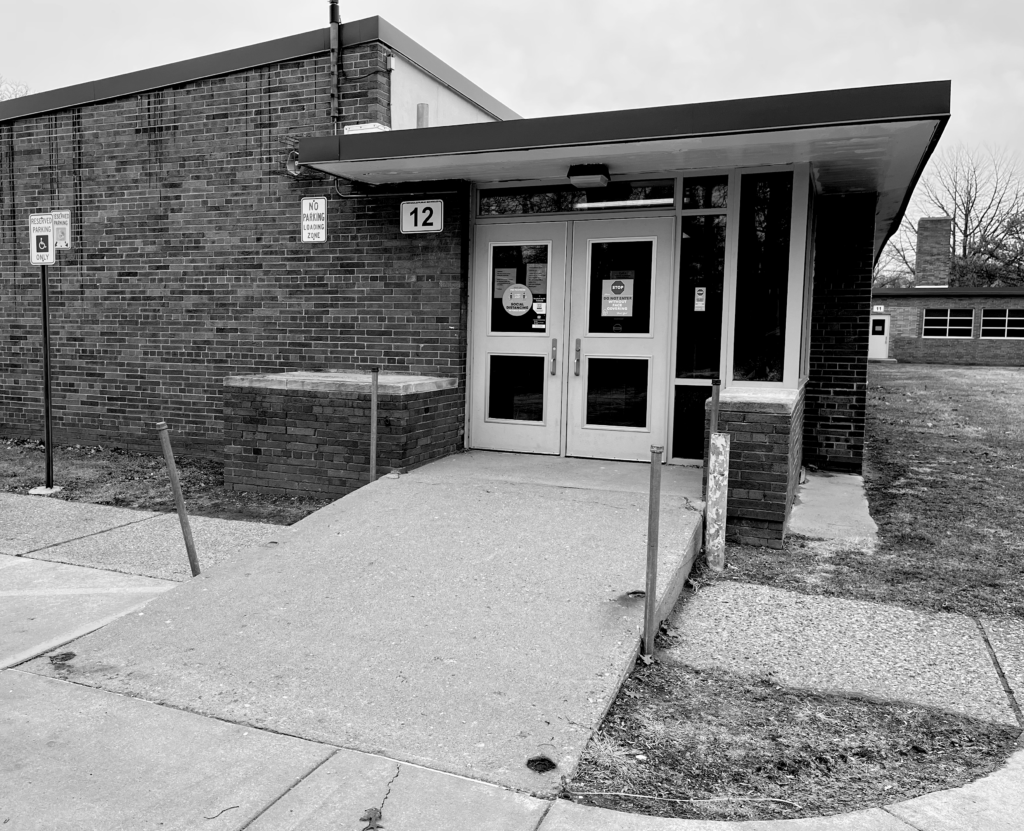My website is mostly devoted to Flavin Stories. Above, you’ll see a number of menu options, such as Real News, Social Commentary, Academic, etc.
1,859 words, 10 minutes read time.
My wife*, Kim, works at a school in Baltimore County called Battle Monument. It’s a public school for children ages 3 through 21 who have more than special needs. I don’t mean special needs, as in learning disabilities, like dyslexia or ADHD. And I don’t mean to dismiss serving those needs as being somehow less important, but at her school, some of her students are nonverbal, some can’t walk, and sometimes a child can’t go to the bathroom by themselves, so Kim and her colleagues takes care of all of their hygiene needs. They care for and educate children with Down’s syndrome, people on both ends of the autism spectrum, and those with medical needs so severe, it is not unlikely that one of their 75 students would die each year. Before she and I found each other, it had never occurred to me how this population was served in our society. I had been a teacher for 12 years, and I didn’t know.
Kim comes home with bruises on her forearms or scratches on her face. She has had to run away from a child because that child was 275 pounds and 6-foot 3. Sometimes bodily fluids are flung, spat, or eaten, and it’s their jobs to control it. Sometimes she has to shower when she gets home.
I can hardly comprehend it. I couldn’t do it. I could only manage kids younger than their teen years if the onset of an apocalypse forced it as a matter of survival. But medically-fragile kids who sometimes cannot speak their needs or who get so frustrated they lash out with finger nails or their incisors?
There are four of these types of schools in Baltimore County. What happened to our youth who live with these various conditions or disease before 1975, when it was law that every child receive a free appropriate public education*.
When I was a kid at Jackson Elementary School in Oak Park, Michigan, my brain had developed in step with typical cognitive and social skills, according to the American Psychological Association website.
Between the ages of 6 and 10, they say, I was “able to understand the viewpoints of others.” And I was “aware that others can have different thoughts.”
I have a distinct visual memory of a schoolmate that lasted maybe two seconds, and yet for the 50 years since, that moment has mushroomed into so much more. As I got older, I became aware of the moral and emotional implications, the social and political connections, and the missed opportunities have transformed the meaning of those two seconds. The more years that have passed, the more my understanding of its meaning expands.
It’s true with every memory. The few seconds that our mind captures a brief comprehension of an event may be remembered for 50 years or more, but the event itself is often the least significant part. The event itself stands as a thumbnail of what was happening all around it, particularly if those moments took place when we understood so little, as was the case for me in 1975.

That is, what happened behind Wing 4 of Andrew Jackson Elementary School has less to do with what I visually saw in that moment, and everything to do with what it has come to represent.

I was alone when I left Mrs. Grady’s class and ran out the door to the playground. Recess had just started, and I was racing to the usual spot to meet other kids for the daily game of “catch John and Mike.” Mike Nowland and I both had several active, older brothers who undoubtedly honed our athleticism. This made us harder to catch, so “tag” soon became a game of “catch John and Mike.” The enormous playground was covered with wood chips that had been repurposed from local tree cuttings by the City of Oak Park. It wasn’t uncommon to get stabbed by sticks that slipped through the chipper with dagger-like ends.
Up a slight incline, dozens of great oak trees that stood opposite the school. They were close to a hundred feet tall, separating our playground from the back yards of the houses facing Majestic Street. All the usual structures stood with their time-worn solid steel: an 8-seat swing set, a tall slide with a hump in the middle, and a merry-go-round that was so heavy it took three or four of us little ones toiling in concert in order to get it going. By modern safety standards, once these things got going around, the weight and momentum would have been calculated to equal “prohibited by law.”
The back of Wing 4 was the spot where Diane, a black girl one year older, had walked past me with two Lofstrand crutches, two bent legs, a crooked body, and a big white-toothed smile. Her gait was uneven and labored. A Lofstrand crutch, or elbow crutch, is a type of forearm crutch that supports the weight of the body through the forearms instead of the underarms.
I looked up, our eyes met, and her whole face smiled. I hadn’t expected her eyes to be so inviting. I hadn’t expected her big smile to be so happy or her face to be so joyful. In those two seconds, I also hadn’t expected that she would look like she understood. If I hadn’t been thrown off by all of that, I probably have smiled and possibly said hello. Instead, my thoughts froze.
I had seen her around the school occasionally, but that was the first time we had made eye contact in close proximity. She, along with other children of all ages with disabilities, went to separate classrooms in Wing 2. Wings 1, 3, and 4 were for typically developing kids.
Whatever my observational skills at the time, it looked like she understood friendliness more so than a reflexive response to making eye contact. What shocked me into silence was that it looked like we could have talked like typically-developing kids because, I learned later, we were both typically-developing kids, one of whom happened to have a severe physical disability.
“Becomes able to understand the viewpoints of others.”
American Psychological Association
My two-second visual memory consists of Diane’s inviting eyes and dazzling smile. My retrospective, 50+ year cumulative memory remembers myself unable to respond, with the burden of history and dysfunctional social systems attached to it like a fat python around a small pig. Just say hello like I would any other kid.
My parents fostered the skill of paying attention to my surroundings, sure, but I was struck paralyzed and my 6 to 10 year-old brain couldn’t process what to do with Diane’s typically developing social awareness. I had believed that, because she was housed in Wing 2, she must have been mentally impaired or unable to think. Or, as I would have described her then, she was “retarded.” So, I walked past her without a word or a smile.

That night dreamt about Diane. I’m sure my brain was trying to understand the morning’s two-second event.
In the dream, I was walking toward Oak Park Park, a huge public space with two baseball fields, an ice rink, a significant wooded area, a full-sized pool, concession stands, and several playgrounds. I had played little league baseball and flag football there, so it’s no surprise that that was my direction in the dream, but it was a couple miles away, and in the Motor City, few people walked more than a half-mile unless they had to, so, in reality, we rarely walked.
As I got closer, in front of an abstract version of the Oak Park police station, I saw a stairway that went into the ground. No signs, no railings, no apparent reason, but it did have the same carpet as my home; older and worn olive green shag carpet consistent with the times and the income of our household.
I walked down to the bottom of the stairwell to find two doorways without doors. They were immediately dark, the sunlight from above not seeping in more than a foot or two into the openings. I had no idea where they led, but I did know that one led to good and the other to evil. I had that inexplicable understanding we sometimes have in dreams where we just know. A also knew that I had to choose one of the two doorways to enter, and my fate would be determined. It was the right choice, or it was the wrong one.

Before I made the decision, Diane came out of the left door. I don’t remember seeing her clearly, like I had that morning, but I knew it was her. I quickly deduced that she came out of the evil doorway, so I turned around, and tried to run back up the stairs to safety. The old dream cliche of my feet feeling like they were made of lead had deadened my legs, and I couldn’t escape. I made it three or four stairs, dreading that Diane would catch me. And then I awoke with a start.
The two seconds of Diane bright and happy face moving past me 50 years ago is alive in my memory.
In scattered fragments of blurry remembrances, she went in and out of Wing 2 and spent her recess on that side of the chain-link fence, away from the children I played with.
And one night, she chased me up the olive green carpeted stairs, presumably intending to drag me back to my fate with evil through door #1.

Why would I dream about Diane symbolizing evil when I had my first authentic exchange with her, however brief?
Like my inability to be fully aware of her discerning eyes in that moment, I couldn’t do what the APA also said I could: “focus on several aspects of a problem.”
And it was a problem.
I accepted that the authorities at our school isolated Diane and other non-typically developing children because they were so unlike the rest of us. I could see they were in wheel chairs, permanently used Lofstrand crutches, and otherwise looked different from me. Me and some of my friends would say, “Let’s act retarded,” and then we would mimic Diane’s angled body. In 1975, that word was normal and accepted language, and, importantly, it was all-encompassing:
It meant that those kids administratively socked away in Wing 2 may or may not have had a physical disability, but it was a foregone conclusion that they couldn’t think very well. Diane included.
That’s where my confusion lied.
I had never met the students in Wing 2, so I was in the dark about their abilities or disabilities. The all-encompassing label–retarded–cemented the illusion that, ultimately, they were all the same: unaware of silliness, humor, spontaneous play, amazement, fun, music, joy, fairness, and the simple understanding of words and gestures and emotions, let alone ideas. Let alone the idea that we could have been friends.
They were truly “other” people, and yet Diane saw me and she seemed to know how to “act normal. Being a generally friendly boy and typically developing, it was clear to me that what I saw in Diane’s face in those two seconds meant that we could have at least been friendly. She was like all the kids I knew on this side of the chain-link fence.
Had Diane and the others been included in our classrooms, would she have been much different than any of my classmates.
With new accumulating knowledge, my memory has changed what happened during those two seconds, but at that time, there were too many conflicting and unknown variables. Maybe I could “focus on several aspects of a problem,” but I was oblivious to most of them.
Outside of those two seconds of eye contact, Diane and I had little chance of being friends, or even friendly. I wasn’t “better able to empathize with other people and accept the idea of giving special consideration to those in greater need,” despite the findings of the American Psychological Association. Every system in our 1975 Oak Park community made sure of it:
The chain-link fence was built to isolate her and to free me.
The policies of exclusion were deliberately constructed by old-world educators of that century.
The physical separation of their classrooms were well-signed in the hallways.
The entertainment culture rarely integrated “others” into so-called normal society.
My friends and I thought it was normal to mimic and mock Diane and her peers.
All of it. All of it eclipses our two seconds of eye contact. Empathy and “special consideration” didn’t stand a chance.
Nothing can be done about the reality of our systems during that time, but I will remember the Diane behind Wing 4 at the beginning of recess that one day. I will remember her wide smile, energetic body language, kindness, and her friendliness.
Had there not been a canyon between us carefully assembled by the adults in that school, that district, and perhaps in all public schools across America, I might have had hours, days, weeks, or possibly years of memories with Diane, whatever our relationship.
Decades later, I will have to settle for those two seconds.
Not only was much of the existing schooling inadequate or misplaced, but significant numbers of children with disabilities were not being educated at all. Thousands of children were simply turned away by schools who said they were unable to educate them and were not required by law to do so.
In 1975, when Congress passed the Education for All Handicapped Children Act, education for all children with disabilities changed dramatically. Regardless of the type or degree of disability, each school-aged child had the right to a “free appropriate public education.”
Written April 17, 2022



